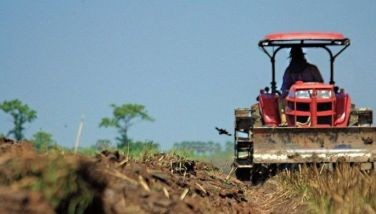Zamboanga stakes claim as RP’s top seaweed producer
In the face of declining seaweed harvests in the country’s traditional major seaweed production centers, the regional office of the Bureau of Fisheries and Aquatic Resources (BFAR) in Region IX has taken bold steps to intensify seaweed culture in the whole
“The objectives,” says BFAR Region IX director Virgilio Alforque, “are to help stabilize seaweed supply in the country, enable seaweed processors to operate at higher capacity and, most importantly, make it possible for Zamboanga’s seaweed farmers to take advantage of prevailing high prices.”
Alforque believes that given the country’s comparative advantages in seaweed farming, the seaweed business will remain a major export winner, bringing in precious foreign exchange while contributing to the government’s livelihood generation and hunger mitigation programs.
Alforque believes that this is the best time to encourage people to go into seaweed culture.
The Seaweed Industry Association of the Philippines (SIAP), through its president, Benson Dakay, has issued a call for an aggressive seaweed production program to meet the demand not only of local processors but those of other countries as well.
Dakay laments that while local production of eucheuma cottonii remains limited and insufficient to meet local demand, the situation is aggravated by the fact that three countries –
Alforque said that while the competition being offered by foreign buyers is not good for local processors, it augurs well for seaweed farmers because it is their assurance that demand will remain high and price levels will continue to be to their advantage.
The seaweed industry provides livelihood to an estimated 120,000 coastal dwelling families and contributed an estimated P7.8 billion to the Philippine economy in 2003.
Region IX contributed more than 100,000 metric tons (MT) in fresh weight out of the 988,888 MT of seaweeds produced in the country in 2003. That volume contributed P364 million to the economy of
Last year, Region IX ranked third among the largest seaweed producers in the country, behind the Autonomous Region of Muslim Mindanao (ARRM) and the
Alforque is optimistic that in two years, Zamboanga will dislodge
Region IX’s advantages, according to Alforque, include large yet untapped suitable culture areas, abundant supply of planting materials, strong government support in terms of research and development, lower production cost and wide product range.
To date, the
Alforque predicts that total culture area will increase to more than 200,000 hectares next year.
The acceleration of seaweed culture in the Zamboanga area has the support of Agriculture Secretary Arthur Yap and BFAR Director Malcolm Sarmiento.
Sarmiento, for his part, has approved the establishment of more seaweed nurseries in strategic areas in the peninsula, the construction of new drying facilities, the repair of old drying facilities and the conduct of more research and development.
Published reports describe seaweeds as sources of carrageenan (from Kappaphycus, originally called Euchema) and agar (from Gracilaria) which is a yellowish or tan to white, coarse to fine powder obtained from processed seaweeds.
Websites on seaweeds describe carrageenan as an excellent substitute for fat, a great meat extender, a good stabilizing agent for canned meat and fish.
It is also used as foam stabilizer and binder for toothpaste, thickener for shampoo and gelling ingredient for a wide variety of food and pharmaceutical products.
What makes the outlook for the local seaweed industry really good, says Alforque, is the recent decision of the European Union to lift its ban on Philippine carrageenan.
He adds that what makes this development more providential is that it coincided with the closure of the biggest carrageenan factory in
Alforque says he has prepared a roadmap toward achieving for the Zamboanga seaweed industry an unprecedented level of growth. The plan includes tapping the support of research institutions like SEAFDEC, conduct of an aggressive extension program that harnesses the bayanihan spirit, establishment of demonstration farms and hatcheries, application of advanced and mature culture techniques, setting up of more post-harvest facilities and the application of better science in the assessment and selection potential seaweed farms.
Alforque says he has instructed his staff to compile lessons learned from failed seaweed programs in the past. One area that concerns him most is the failure associated with global warming and excessive grazing by herbivores like sea urchins and siganids.
Fortunately, a new research by SEAFDEC researchers Anicia Hurtado and Renato Agbayani has shown that deep water (more than 10 meters deep) farming of the seaweeds Kappaphycus is possible and very profitable just like the other methods in shallower waters. This method in deeper waters is commonly called alul.
The study assessed the seaweed planters’ practices using the multiple raft, long-line method in three cultivation areas of Zamboanga del Sur,
The result showed that though the method is expensive, production was greater and the revenue higher compared to traditional methods of seaweed farming in shallow waters. Estimated production of Kappaphycus ranged from 38.5 to 67.5 tons dry weight per year per family with 5-7 rafts. Average return on investment (ROI) based on five crops per year was 169.67 with a payback period of 0.62 year.
Alforque believes that deep water farming will also help mitigate culture challenges posed by global warming and climate change.
Says he: “The advantage of our seaweed production program is that it will be anchored, not on hit- or-miss approaches but on the steady foundation of scientific studies and advances in technology.”
- Latest




























